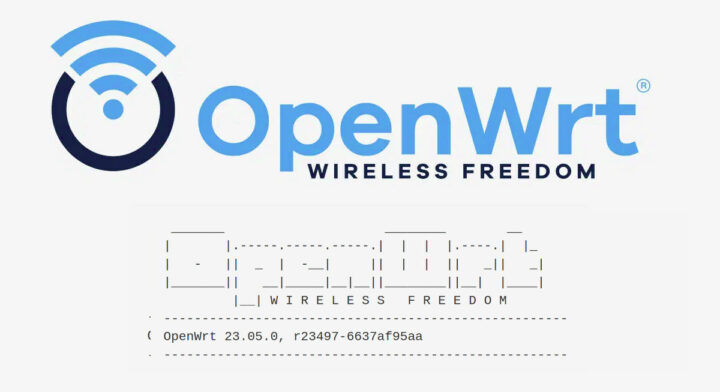OpenWrt 23.05 open-source Linux operating system for routers and resource-constrained headless embedded systems has just been released with over 4300 commits since the release of OpenWrt 22.03 a little over a year ago.
The new release now supports over 1790 devices or about over 200 new devices compared to the OpenWrt 22.03 release with notable new targets including the ipq807x target for the Qualcomm IPQ807x WiFi 6 SoCs, the mediatek/filogic subtarget for the Mediatek Filogic 830 and 630 SoCs, and the sifiveu target for the HiFive Unleashed and Unmatched RISC-V development boards.
OpenWrt 23.05 switches from wolfSSL to MbedTLS as default because the latter has a much smaller footprint and offers a more stable ABI (application binary interface) and LTS releases, but it does lack support for TLS 1.3, so users who need the latter may still switch to wolfSSL if needed.
Another highlight of the new OpenWrt release is support for packages written with the Rust programming language, and some examples include bottom, maturin, aardvark-dns, and ripgrep.
Core components have been updated with Linux 5.15.134 now used for all targets as well as busybox 1.36.1, an upgraded toolchain relying on musl libc 1.2.4, glibc 2.37, gcc 12.3.0, and inutils 2.40, and for networking OpenWrt 23.05 now uses hostapd master snapshot from September 2023, dnsmasq 2.89, dropbear 2022.82, and cfg80211/mac80211 from kernel 6.1.24.
The migration from migrated from swconfig to DSA configuration that took place in OpenWrt 21.02 and OpenWrt 22.03, is not an issue anymore in OpenWrt 23.05, and most people should be able to upgrade from OpenWrt 22.03 through the sysupgrade utility which will do its best to preserve the configuration. The developers still recommend backing up the configuration before going ahead with the upgrade just in case. You can also download binary images for your target(s) for a new installation.
Further details may be found in the official announcement.
Via Phoronix

Jean-Luc started CNX Software in 2010 as a part-time endeavor, before quitting his job as a software engineering manager, and starting to write daily news, and reviews full time later in 2011.
Support CNX Software! Donate via cryptocurrencies, become a Patron on Patreon, or purchase goods on Amazon or Aliexpress





